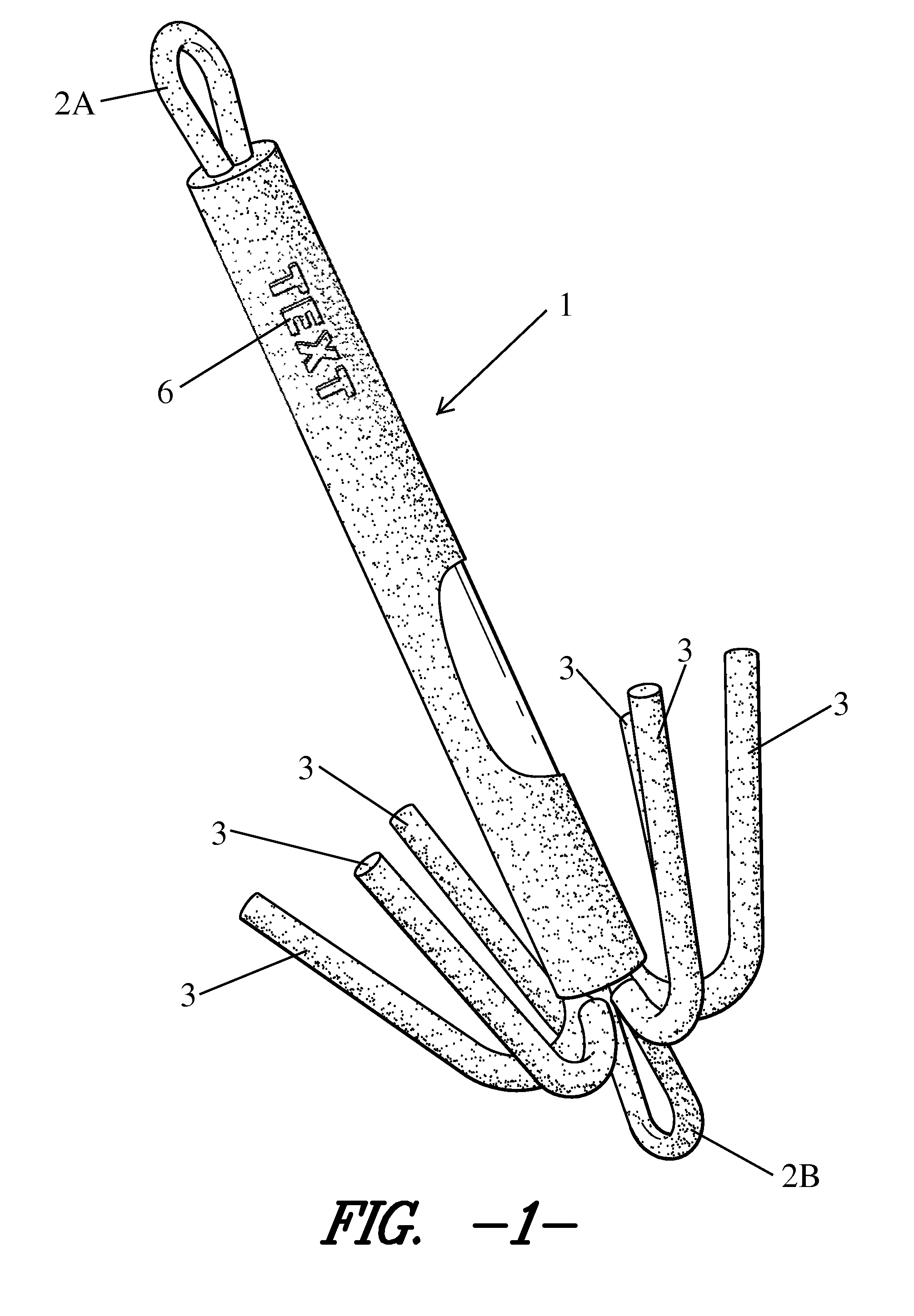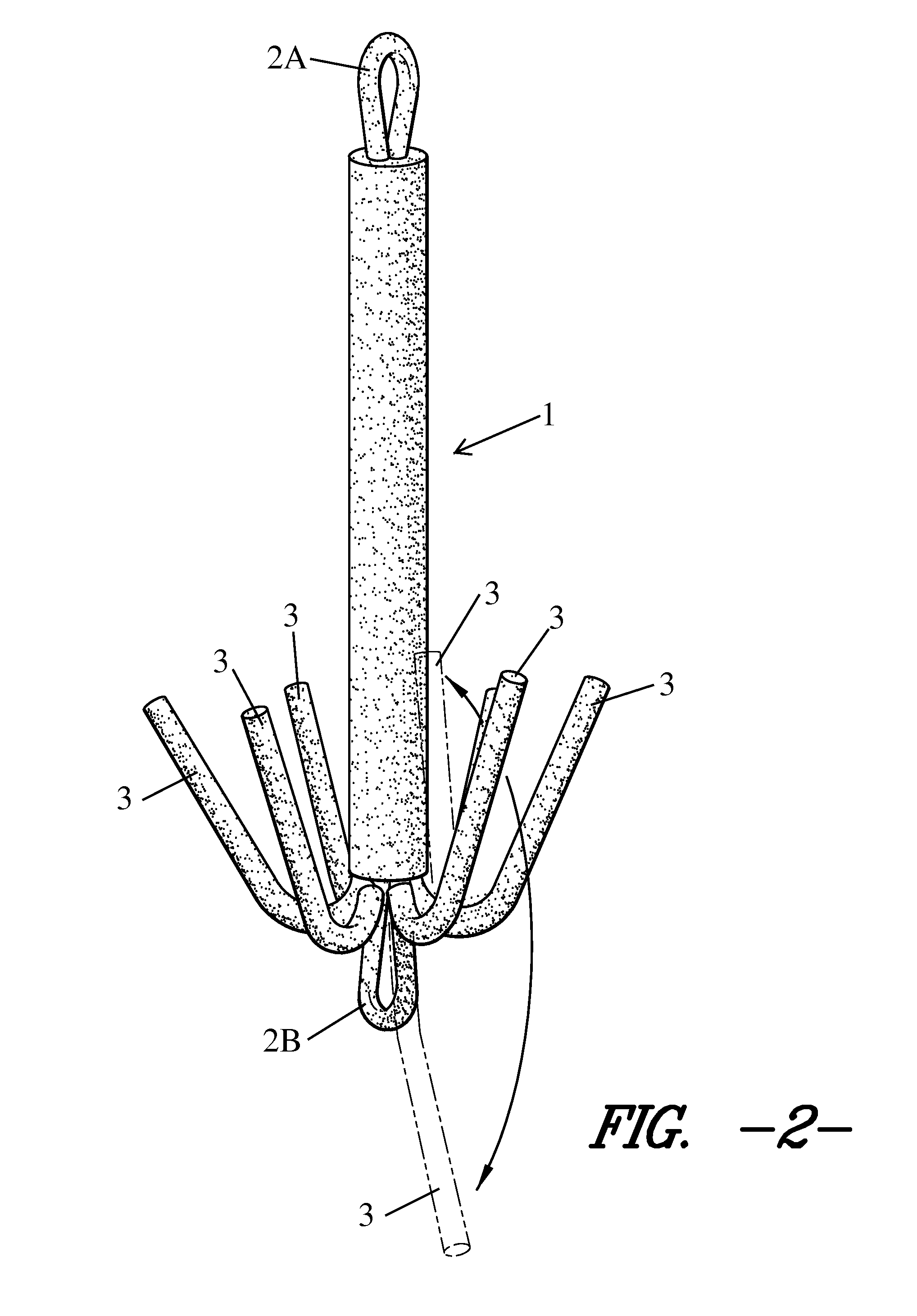Boat Anchor and Method of Making the Same
a technology for anchors and boats, applied in the direction of superimposed coating process, liquid/solution decomposition chemical coating, vessel construction, etc., can solve the problems of unrestrained movement and bending of flexible tines, point to quickly fail under extended use, etc., to achieve quick and easy deployment, easy to retrieve, and minimal effort
- Summary
- Abstract
- Description
- Claims
- Application Information
AI Technical Summary
Benefits of technology
Problems solved by technology
Method used
Image
Examples
Embodiment Construction
[0015]As seen in FIGS. 1-4, The disclosed anchor includes a main body 1 which is formed of a cylindrical surface enclosed by circular faces on each end. A rode attachment point 2A, 2B is provided on one or both ends of the main body 1, on or near one or both endpoints of the longitudinal axis of the main body 1 (i.e., on or near the centerpoint of one or both of the circular end faces). The attachment points 2A, 2B may be provided, e.g., as eye bolts threadedly received by each circular face of the main body, or, as shown in the attached drawings, in the form of a semi-circular arch. The disclosed anchor further includes a plurality of flexible tines 3 attached to one end of the cylindrical surface of the main body 1, the end of the main body 1 where the tines 3 are attached is referred to as the bottom end.
[0016]A rode attachment point 2A is provided on or near the top endpoint of the longitudinal axis of the main body 1. A second rode attachment point 2B may optionally be provided...
PUM
| Property | Measurement | Unit |
|---|---|---|
| angle | aaaaa | aaaaa |
| flexible | aaaaa | aaaaa |
| metallic | aaaaa | aaaaa |
Abstract
Description
Claims
Application Information
 Login to View More
Login to View More - R&D
- Intellectual Property
- Life Sciences
- Materials
- Tech Scout
- Unparalleled Data Quality
- Higher Quality Content
- 60% Fewer Hallucinations
Browse by: Latest US Patents, China's latest patents, Technical Efficacy Thesaurus, Application Domain, Technology Topic, Popular Technical Reports.
© 2025 PatSnap. All rights reserved.Legal|Privacy policy|Modern Slavery Act Transparency Statement|Sitemap|About US| Contact US: help@patsnap.com



